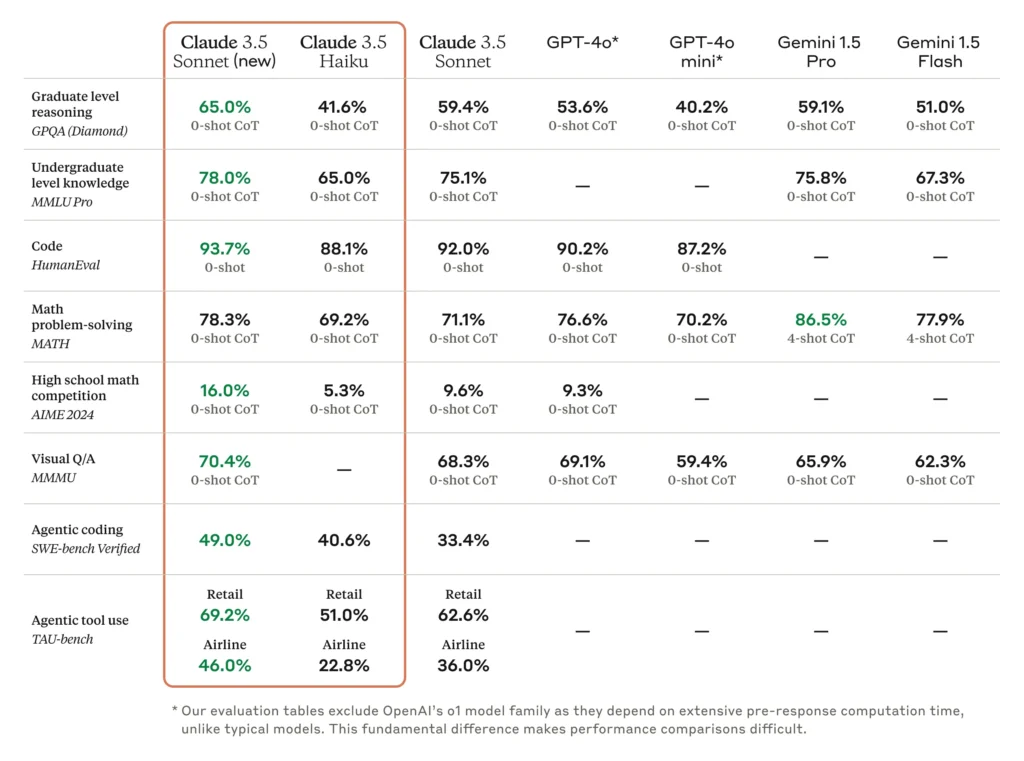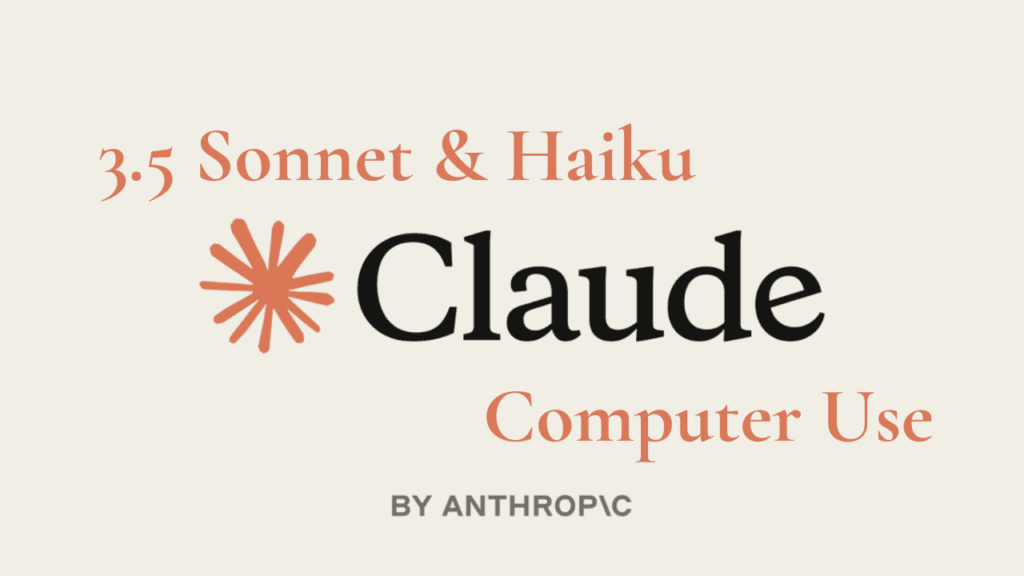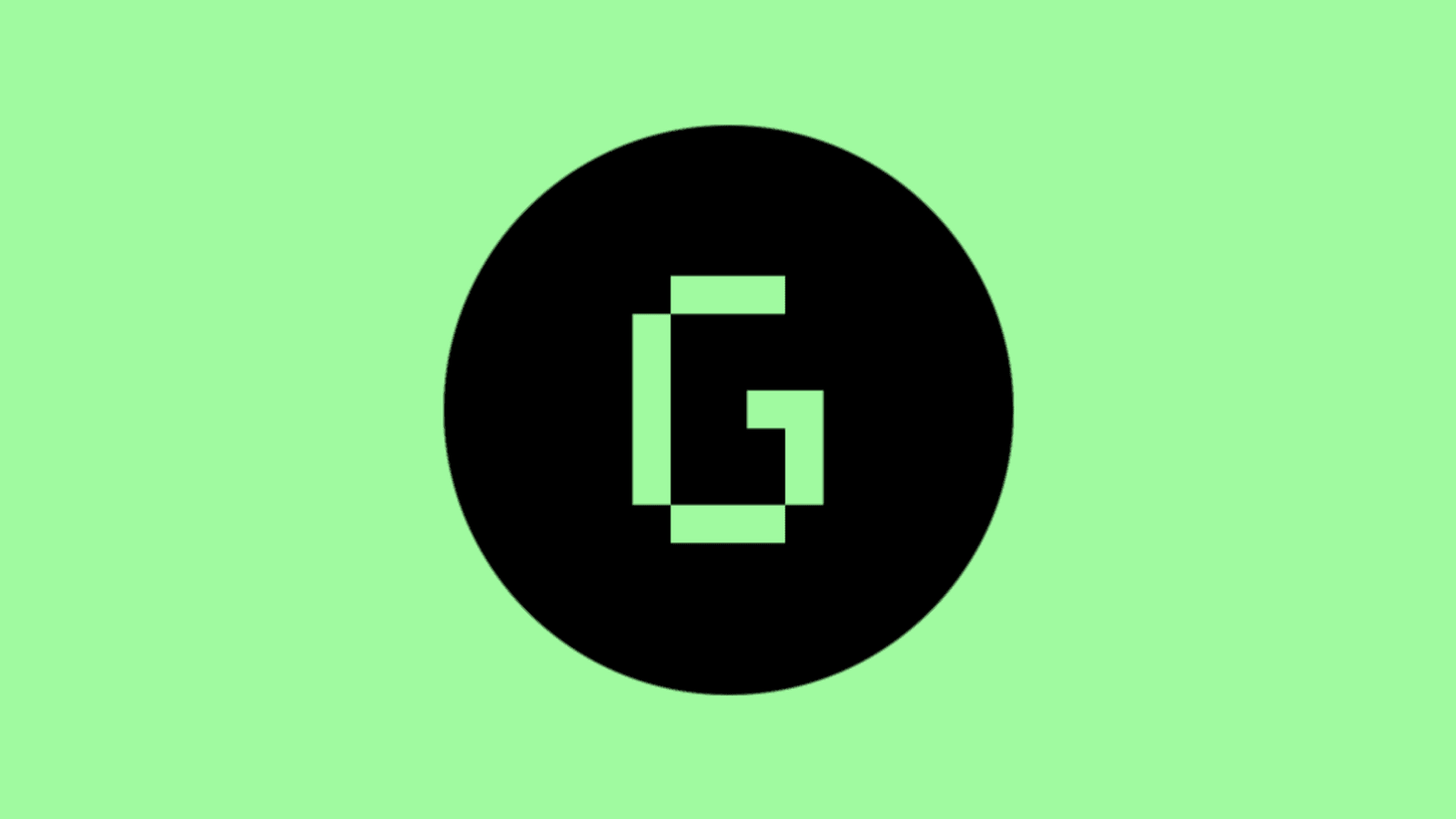The AI space is buzzing with Anthropic’s latest announcement: the upgraded Claude 3.5 Sonnet, the new Claude 3.5 Haiku, and a game-changing feature—computer use. Let’s break down why these advancements matter, and how they’re going to change the game for developers and businesses alike.
Meet Claude 3.5 Sonnet: A Coder’s Best Friend
The updated Claude 3.5 Sonnet is Anthropic’s latest iteration in AI capabilities, designed to raise the bar for software engineering. This model has seen impressive upgrades, especially in coding, an area where it’s been a top contender already. Think of it like a seasoned coder who just added more tools to their belt without slowing down.

Claude 3.5 Sonnet now leads on SWE-bench Verified, boosting its performance from 33.4% to 49.0%—beating every other publicly available AI model, including OpenAI’s much-talked-about o1-preview. It’s not just coding, either. The model has improved across the board, even taking on complex tool use challenges, scoring a solid 69.2% on TAU-bench in the retail sector and 46.0% in the airline sector.
What makes this release even more compelling? It comes with zero added cost or speed reductions. It’s like upgrading your old computer and finding out it’s suddenly twice as powerful—without needing to pay extra.
Why It Matters: Claude 3.5 Sonnet’s improvements in agentic coding and tool use open the door for faster, more reliable software development. Companies like GitLab are already using it for DevSecOps tasks, noting a 10% boost in reasoning without adding latency. And The Browser Company? They’re automating web-based workflows with Sonnet, claiming it’s the best AI model they’ve tested yet.
Claude 3.5 Haiku: Speed, Affordability, and a Whole Lot of Power
Not everyone needs the power of Sonnet. Enter Claude 3.5 Haiku, the lightweight but formidable sibling. It’s designed to match the performance of the Claude 3 Opus—Anthropic’s previous heavyweight—without slowing down or breaking the bank. Haiku is perfect for those who need efficiency in a hurry, like user-facing applications or specialized tasks.

Claude 3.5 Haiku’s strengths lie in its ability to take on coding challenges, scoring an impressive 40.6% on SWE-bench Verified—better than many state-of-the-art models. And it does all this at the same speed as its predecessor, Claude 3 Haiku. Anthropic’s strategy here is simple: make high-quality AI more accessible without compromising performance.
Why It Matters: Think of Claude 3.5 Haiku as the AI that can handle everyday tasks with the same finesse as big models but without the overhead. It’s ideal for businesses needing rapid, real-time responses—like processing data, interacting with customers, or handling inventory management.
Claude’s Computer Use Skills
Imagine an AI that doesn’t just generate code or text but can interact with a computer like a human. That’s what Anthropic’s introducing with the new computer use beta. It’s like giving Claude a pair of virtual hands to click, scroll, type, and navigate digital interfaces. This is where things get really interesting.
The computer use capability allows Claude to perform complex, multi-step tasks that previously required human input. Anthropic has been teaching Claude to use standard tools and software programs directly—think automating web searches, filling out forms, or testing software applications. It’s all about creating an AI that can handle digital grunt work, so you don’t have to.
Developers can access this beta feature through the Anthropic API, Amazon Bedrock, or Google Cloud’s Vertex AI. But don’t expect it to be perfect—yet. It’s still in the early stages, which means it can get tripped up on simple actions like dragging or zooming. But that’s the point: Anthropic wants feedback to refine and improve these capabilities.
Why It Matters: This is a potential game-changer for companies looking to automate repetitive or complex workflows. Early adopters like Replit are already using it to build features that evaluate apps in development, leveraging Claude’s ability to interact with UIs. Anthropic’s new skill set could redefine what it means for AI to “assist,” turning it into a true partner for developers and businesses.
A New Era of Responsible AI
With great power comes great responsibility. Anthropic hasn’t ignored the risks of giving AI more autonomy in using computers. They’ve collaborated with the US and UK AI Safety Institutes for pre-deployment testing and have incorporated safeguards to ensure this new feature isn’t exploited for nefarious purposes like spam or misinformation.
By building classifiers that can monitor and identify when Claude’s computer use might be crossing a line, Anthropic aims to stay ahead of potential risks. The AI isn’t just smart—it’s monitored and calibrated to stay in its lane.
The Future of Claude: What’s Next?
This release marks a turning point in the evolution of AI. By integrating advanced coding capabilities with a first-of-its-kind ability to use computers, Anthropic is pushing boundaries. The company has been clear that they see this as a work in progress, and they’re actively seeking feedback to fine-tune these features.
What It Means for You: If you’re a developer, business owner, or just an AI enthusiast, now’s the time to dive in and see what these new tools can do for you. With Claude 3.5 Sonnet and Haiku, you’re getting more power without extra cost, and with computer use, you’re glimpsing the future of AI integration.
Final Takeaway
Anthropic’s Claude 3.5 Sonnet and Haiku models aren’t just about adding another line of code or automating a simple task. They represent a bold step toward a future where AI doesn’t just analyze data but actively engages with the digital world around it. It’s early days, but the potential here is massive—think of it like the iPhone in 2007. It’s not just a tool; it’s the start of a new era. And for those who want to stay ahead, now’s the time to get on board.



